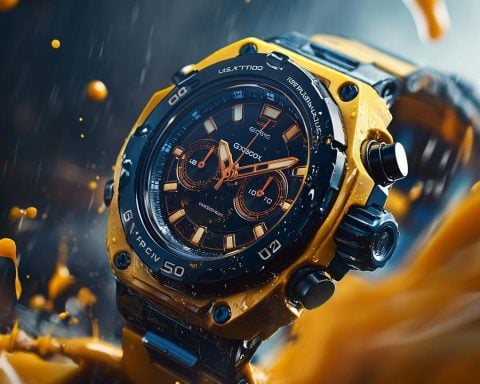In an ambitious stride toward revolutionizing urban travel, Chinese automaker Chery has introduced an innovative prototype, the ‘Land and Air Vehicle’, at the Chery Global Innovation Conference in Anhui, China. Diverging from traditional automobiles, this unique conception features no steering wheel or accelerator, embodying fully autonomous operation in both flight and terrestrial modes. Successfully completing an 80 km test flight, the vehicle aims to alleviate urban congestion woes by seamlessly transitioning between land and aerial travel.
The design of the ‘Land and Air Vehicle’ comprises three distinctive components: an advanced aircraft, an intelligent cockpit, and a cutting-edge intelligent chassis. Its remarkable capability for vertical takeoff and landing positions it as a game-changer in urban commuting solutions. Though flying car concepts have been circulated widely, primarily in China, few have reached operational stage; Chery’s thorough testing reflects significant progress toward possible passenger-ready deployment.
In parallel, Chery launched its advanced all-solid-state battery technology under the new Kunpeng brand. The company anticipates achieving an energy density milestone of 400 Wh/kg by year-end, with future targets set at 600 Wh/kg by 2025. This innovation promises to extend electric vehicle ranges substantially, with the first applications expected by 2026.
Kunpeng’s three distinct battery series, designed for various electric vehicle configurations, are set to enhance the performance and sustainability of new energy vehicles on the global stage. With the rapid progress in flying vehicle technology and sustainable energy solutions, Chery is poised to leave a significant mark in the next phase of transportation evolution.
Transforming Urban Mobility: The Implications of Chery’s Innovations on Society
The unveiling of Chery’s ‘Land and Air Vehicle’ and their advanced battery technology not only highlights the strides taken in transportation innovation but also raises pivotal questions about their broader impact. As urban centers worldwide grapple with congestion and environmental concerns, Chery’s initiatives offer promising solutions that may redefine how people live and interact in cities.
The Potential and Challenges of Urban Air Mobility
With Chery’s ‘Land and Air Vehicle’ successfully completing its inaugural test flight, the concept of urban air mobility takes a monumental step closer to reality. This development could significantly mitigate traffic congestion, reduce commute times, and improve quality of life in densely populated areas. But, it also poses questions: How will regulations adapt to hybrid air and land vehicles? What infrastructure changes are required to accommodate landing zones in city landscapes?
As promising as these prospects are, integrating flying vehicles into urban landscapes invites challenges, from airspace management to safety protocols. Cities will need to revamp existing regulations and infrastructures to ensure that air travel can safely and efficiently coexist with traditional modes of transportation. Moreover, public acceptance will play a crucial role; the idea of flying cars may take time to be universally embraced due to safety concerns and privacy issues.
Revolutionizing Energy Storage with Kunpeng Batteries
Chery’s introduction of its Kunpeng battery technology marks a significant leap in sustainable energy solutions. With anticipated energy density reaching 400 Wh/kg by the end of the year and targets of 600 Wh/kg by 2025, these advancements could drastically extend the range of electric vehicles, making them a more practical alternative to internal combustion engines.
This progress in battery technology indicates a shift towards more sustainable urban environments. As electric vehicles become more accessible, we might see a significant decrease in urban air pollution and a step towards the decarbonization of cities. However, the production and recycling processes of batteries also raise environmental and ethical concerns, such as sourcing minerals and managing waste.
Global Implications and Strategic Competitions
The innovations presented by Chery not only influence local domains but also position China as a formidable player in the global race for flying cars and advanced battery technologies. With Chery International leading advancements, it amplifies competitive dynamics among automakers and tech companies worldwide, pushing others to accelerate their research and development efforts in similar fields.
Questions for the Future
The introduction of these technologies prompts several essential questions. Will other countries be able to match China’s pace in developing urban air mobility solutions? How will societal norms shift with the widespread adoption of vehicles that blur the line between ground and air travel? What unforeseen challenges might arise from a transition to electric-focused transportation models, especially in terms of ecological and economic impact?
In summary, Chery’s advancements potentially herald a new age in urban mobility. Yet, they come with their own set of challenges and opportunities that will necessitate global collaboration and innovative regulatory strategies. These developments not only promise a future with faster, greener transportation but also call for thoughtful consideration of how such technologies integrate into human life and governance systems.
The article has been updated: 2024-11-07 13:54
Here are some suggested related links:
1. Chery International – Official site for Chery International, providing insights into their latest vehicles, innovations, and corporate news.
2. AutoWeek – A leading automotive news site that covers the latest trends in vehicle technology, including autonomous vehicles and urban mobility.
3. TechCrunch – A technology news site that frequently discusses advancements in automotive technology, including developments in autonomous vehicles.
4. Wired – A publication focused on how emerging technologies affect culture, economy, and politics, featuring articles on urban mobility solutions.
5. Automotive World – A trusted source for insights and analysis on the global automotive industry, emphasizing innovations like autonomous driving and urban mobility.
6. CNBC – A leading business news network that covers significant developments in the automotive sector, including autonomous vehicle technology and market trends.
7. Forbes – A publication that features articles on innovation in transportation and the future of mobility, highlighting companies pushing the boundaries of technology.
8. The Verge – A technology news site that covers the intersection of technology, science, art, and culture, featuring news on the latest automotive innovations.
These links will provide valuable context and information related to Chery’s efforts in advancing urban mobility through autonomous vehicles.
The article has been updated: 2024-11-08 05:16
What innovations does Chery introduce with its autonomous land and air vehicle for urban mobility?
Chery’s autonomous land and air vehicle incorporates cutting-edge technology such as advanced AI navigation systems, vertical take-off and landing (VTOL) capabilities, and smart traffic management integration. This innovative vehicle aims to revolutionize urban mobility by providing efficient, eco-friendly transportation solutions that reduce congestion and enhance accessibility in crowded urban environments. Additionally, it features seamless connectivity with existing transportation networks, promoting a holistic approach to modern urban travel.














